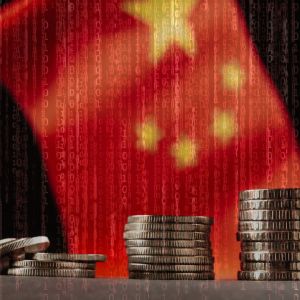BitcoinWorld Urgent: China’s Crypto Crackdown Intensifies, Global Impact Feared The cryptocurrency world is once again buzzing with significant news from the East. Pan Gongsheng , the influential Governor of the People’s Bank of China (PBoC), has made it unequivocally clear: the nation’s firm stance on digital currencies is here to stay. This latest declaration signals a continued China crypto crackdown , reinforcing Beijing’s commitment to controlling its financial landscape and mitigating perceived risks from the volatile crypto market. Why is China Continuing its Crypto Crackdown? According to recent reports from Chinese media, Governor Pan highlighted critical concerns regarding stablecoins. He explicitly stated that these digital assets, often pegged to fiat currencies, pose a significant threat to the global financial system’s stability. More specifically, he warned about their potential to undermine the monetary sovereignty of developing nations, creating vulnerabilities that could lead to economic instability. China’s journey with cryptocurrencies has been marked by a series of stringent regulatory measures. From banning Initial Coin Offerings (ICOs) in 2017 to shutting down domestic crypto exchanges and later, in 2021, outright prohibiting crypto mining and transactions, the nation has consistently pursued a policy of tight control. This sustained China crypto crackdown is driven by several core objectives: Financial Stability: Preventing speculative bubbles and illicit financial activities. Capital Control: Curbing capital flight and maintaining oversight of cross-border transactions. Monetary Sovereignty: Protecting the Renminbi’s status and the PBoC’s authority, especially with the rise of decentralized digital assets. Consumer Protection: Shielding citizens from the inherent risks and volatility associated with cryptocurrencies. The Vulnerability of Stablecoins: A Key Concern for China While the broader cryptocurrency market faces scrutiny, stablecoins are specifically under the spotlight for the PBoC. Unlike volatile cryptocurrencies such as Bitcoin or Ethereum, stablecoins aim to maintain a stable value, often by being pegged to a reserve asset like the US dollar. This perceived stability, ironically, is what makes them a particular concern for Chinese regulators. Governor Pan’s remarks underscore a fundamental worry: the potential for stablecoins to act as conduits for bypassing traditional financial regulations. If widely adopted, they could facilitate unchecked capital flows, complicate monetary policy implementation, and even challenge national currencies. This perspective forms a crucial part of the ongoing China crypto crackdown narrative, viewing stablecoins not as benign innovations but as potential systemic risks. For developing nations, the concern is even more acute. A widespread adoption of foreign-pegged stablecoins could erode their own central banks’ ability to manage their economies, potentially leading to a loss of monetary control and increased reliance on external currencies. China, positioning itself as a leader among developing economies, champions this viewpoint, advocating for strong national financial sovereignty. What Does China’s Crypto Crackdown Mean for the Global Market? The continued and firm China crypto crackdown has far-reaching implications beyond its borders. As one of the world’s largest economies, China’s regulatory actions often send ripples across the global financial and cryptocurrency markets. While direct crypto trading and mining are largely absent within China, its pronouncements influence international policy discussions and market sentiment. For market participants, this means: Increased Regulatory Scrutiny: Other nations might consider similar measures, especially concerning stablecoins. Innovation Shift: Crypto innovation might continue to gravitate towards jurisdictions with more favorable regulatory environments. Market Volatility: Major announcements from influential bodies like the PBoC can trigger short-term market reactions. It also highlights a growing global debate about the future of digital assets: whether they should be integrated into existing financial systems under strict regulation, or if they represent a paradigm shift requiring entirely new regulatory frameworks. China’s approach clearly favors the former, emphasizing control and stability above all else. Navigating the Future: Implications of China’s Stance The PBoC’s unwavering stance on its China crypto crackdown indicates that a reversal of policy is highly unlikely in the near future. Instead, we can expect China to continue refining its regulatory toolkit to combat any emerging crypto-related activities, including those involving decentralized finance (DeFi) and NFTs, which might be perceived as circumventing existing bans. This firm approach also solidifies China’s push for its own central bank digital currency (CBDC), the digital yuan. By clamping down on private cryptocurrencies, China aims to clear the path for its sovereign digital currency, which offers the benefits of digitalization while retaining central control and oversight. This strategic move is not just about banning; it’s about shaping the future of money under national authority. In conclusion, Governor Pan Gongsheng’s latest statements serve as a powerful reminder of China’s consistent and comprehensive strategy to manage financial risks and uphold national sovereignty in the digital age. The ongoing China crypto crackdown is a multi-faceted policy aimed at stability, control, and the strategic advancement of its own digital currency agenda. Understanding this deep-rooted perspective is crucial for anyone involved in the global cryptocurrency ecosystem. Frequently Asked Questions Q1: Why is China so concerned about stablecoins? A1: China’s central bank is concerned that stablecoins could undermine its monetary sovereignty, facilitate unchecked capital flows, and create vulnerabilities in the global financial system. They are seen as a potential tool to bypass strict financial regulations and controls. Q2: What is the history of China’s crypto crackdown? A2: The China crypto crackdown began in 2017 with a ban on Initial Coin Offerings (ICOs) and the closure of domestic crypto exchanges. It intensified significantly in 2021 with a comprehensive prohibition on cryptocurrency mining and all related trading activities within its borders. Q3: How does China’s stance impact the global crypto market? A3: As a major global economy, China’s firm regulatory actions often influence international policy discussions and market sentiment. While direct Chinese participation is minimal, its continued crackdown can lead to increased global regulatory scrutiny, shifts in crypto innovation to other regions, and short-term market volatility. Q4: Is China likely to reverse its crypto ban? A4: Based on statements from officials like Governor Pan Gongsheng and the consistent nature of its policies, it is highly unlikely that China will reverse its comprehensive crypto ban in the foreseeable future. The nation prioritizes financial stability, capital control, and monetary sovereignty. Q5: What role does the digital yuan play in China’s strategy? A5: The digital yuan (e-CNY), China’s central bank digital currency (CBDC), is a key part of its strategy. By clamping down on private cryptocurrencies, China aims to pave the way for its sovereign digital currency, which offers the benefits of digitalization while maintaining central government control and oversight over transactions. Did you find this deep dive into China’s cryptocurrency policies insightful? Share this article with your network on social media to spark a conversation about the future of global finance and digital assets! To learn more about the latest crypto market trends, explore our article on key developments shaping global financial systems and regulatory action . This post Urgent: China’s Crypto Crackdown Intensifies, Global Impact Feared first appeared on BitcoinWorld .
















